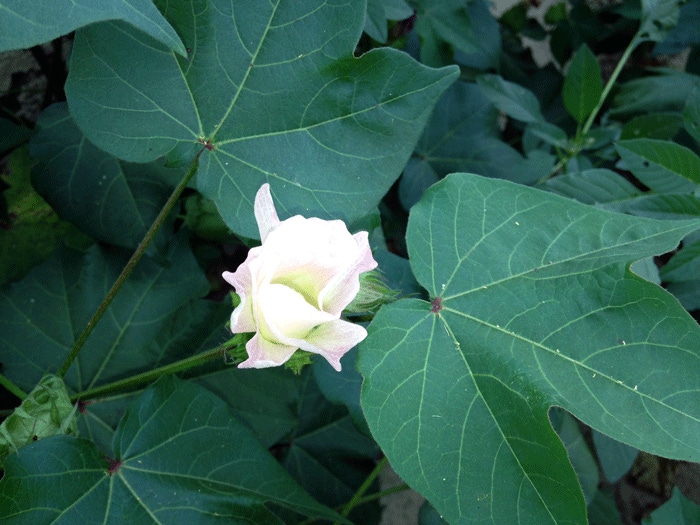
Cotton insect behavior always evolving, control must adjust
The ever-evolving nature of cotton insect control is prompting researchers to take a new look at cotton thrips control.With a larger acreage of soybeans planted in south Alabama this year than in recent years, many growers were concerned about the threat of kudzu bugs.
September 23, 2014

Plant bugs have caused problems throughout Alabama cotton, with the chemicals not working as well as expected in the Tennessee Valley in the northern part of the state this year.
“The bottom line is that it’s difficult to control plant bugs once they are imbedded deep in the canopy during the month of July. That’s why I like to be more proactive and aggressive when it comes to plant bugs,” said Ron Smith, Auburn University Extension entomologist.
“We have a threshold for plant bugs in the early part of the year based on square retention. Are we setting those pinhead squares in the terminal prior to bloom? We’re using an 80 percent threshold. This year, we had plant bugs drifting in from the borders throughout the month of June, so they’re out there, and a lot of the fields stayed at the threshold of 80 percent and above.
“But what some people forgot about is that plant bugs are doing more than just feeding on the pinhead squares in June. They’re depositing eggs. They’ve got a long life cycle and the egg stage is at least 10 days. If you put plant bugs in the field for 30 days in June, you’ve got little plant bugs hatching during the entire month of July when you can’t get treatments down into the canopy. So you need to be thinking about what they’re doing in June and don’t give them free reign in the field even though they may not be hitting the pinhead squares. Spray for adults in June and you won’t have so many in July.”
The ever-evolving nature of cotton insect control is prompting researchers to take a new look at thrips control, says Smith.
“We’re looking at different options a farmer would have on cotton at the beginning of the year. We probably have 10 or 12 treatments. The reason we’re looking at it is that cotton insect control is constantly evolving – it’s never set. There’s always a new pest, a new problem, a new chemical, or resistance to an old material. So it’s a never-ending battle to keep up with insects on the agricultural side.”
A few years ago in the MidSouth, it was found that Cruiser and Avicta seed treatments were not holding up and giving growers the level of thrips control they were looking for, says Smith.
“We have since noticed the same trend here. The other option is imidaclorprid sold as either Gaucho or Aeris, and it is giving us better control in the seedling stage now that the thiamethoxam. Both of these chemicals are in the same class of chemistry. Syngenta, the maker for thiamethoxam, is working on this problem.
Kudzu bugs under control
With a larger acreage of soybeans planted in south Alabama this year than in recent years, many growers were concerned about the threat of kudzu bugs, says Smith.
“I think we have all the answers we need about this pest, and I like to simplify things. They go to kudzu after they’ve overwintered, so they will spend a generation there before they move into soybeans. They’ll go to the earliest planted beans first. Soybeans planted behind wheat likely won’t have to be sprayed for kudzu bugs. You need to be worried about your early planted beans,” he says.
Adult kudzu bugs are found mostly on the perimeter of fields, says Smith. “So if you think you need to treat, just spray the perimeter of the field. What should really trigger when to spray is when the first generation of kudzu bugs hatch in soybeans. So what we focus on is the presence of immatures, and that’ll occur in mid to late July here.
“Sometimes we can make just one application and take care of them for the year. They don’t chew on the leaves. They’ll be on the steam sucking the juices. They induce stress and they mimic drought. They make the seed smaller resulting in reduced yields. We do have good chemicals, and most of the pyrethroids have 90-plus percent effectiveness. You just don’t need to get in there and battle them too much to the point to where you’re aggravating other pests in your soybeans.”
Kudzu bugs have been in smaller numbers this year than was anticipated, says Smith.
“One or two things might be happening. A cold winter likely suppressed their numbers. And researchers at Auburn University have found that there’s a parasitic wasp that flies around looking for kudzu bug eggs in which to deposit their eggs. I don’t know what next year will bring, so we’ll just have to wait and see. We’ve got the answers on this pest, so it won’t be a bad thing – we just need to react when the timing is right.”
About the Author(s)
You May Also Like



